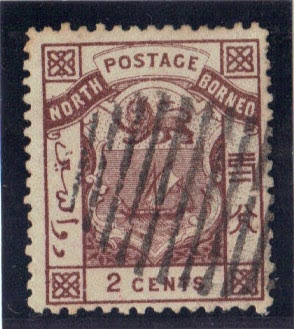Click on Marcel to see what he wrote about his experience a few years ago on his blog. I was lucky to have a few days as one of the shops also sent me away to come back a couple of days later. It was a strange way of doing business. But in general, the Borneo countries are not popular in Holland. All 5 shops except one that I visited mainly has Nederlands and its colonies in stock.
In addition, there are also 2 street stamp markets a week on the part of Nieeuwezids Voorburgwal street just behind the Dam. The stamp shops are also all clustered around, a few minutes away.
We arrived on the Saturday afternoon when the street market was in full swing. Actually, there were about 7-8 stalls in the open air and a few collectors milling around. The first stall only had coins and paper money. The next stall looked more promising as it clearly indicated it has commonwealth in stock. There were very few Borneo stamps. There were 7 NB stamps in his collection. One has a familiar blue smudge of a postmark. I could not believe my luck. I was feeling really hopeful but the rest of the stalls had nothing of interest to me but good stocks of NL stamps and postcards. Saw a German guy there who also collected NB. So glad that I got there first.
The shop owner was probably a wholesaler. He has boxes and boxes of stuff. Even though he had no other customers, he asked me to go back 2 days later on a Monday. Come that morning and to annoyance of my spouse, we were asked to come back in an hour because he was on the phone. I was not going to give up that easily. It was all very disorganised. The stamps were randomly stored in sheets, envelopes, plastic bags etc in a folder. There were no postal history of note ( no Silam cover!). There were some nice stamps which I selected. I had to buy one of the sheets for a few stamps there, the rest being CTO. He seem to have priced the CTOs the same as normal cancellations. Not as good as I had hoped for but not bad overall in retrospect. Some of the stamps are shown below.
The popular blue smudge of a Silam Post Office cancelled stamp! Can just about made out the negative image of the letters "P" and "O" at the top and also the head and the front limbs of the lion. Got this at the street market. Pure fortune!
You can see my other 2 Silams here in the August post last year. Also in December, I "borrowed" a wonderful collection of Silam which included the much coveted orange red. You can see it here.
A double ring fiscal Sandakan D10, again on a 3c stamp, probably the levy paid on a fishing, hunting license etc. Note the nice Maltese cross. I am still looking for the Kudat and Jesselton versions of this BNBC strike.
A Sandakan D4 cancellation with the date Jan (1)89(inverted 2).
Also got this from the street stall. I think the cancellation is rather attractive and has been applied at least twice judging from the 3 rings visible. The cancellations are in deep blue. I think it is a Jesselton postmark on a Labuan stamp, not that uncommon. Suggestions would be welcomed.
Two stamps with thick bar cancels which look like Mempakuls but are actually the Labuan 9 bar K3 cancellations.
They both have the Sandakan K1 13 bar cancellations, the first indigenous postmark of NB to be used. It came into being in January 1884. SG1 was issued prior to 1 March 1883. What markings were they using at the beginning? pen cancels? AC cancels?
The second stamp also has a red Sandakan ?D3 and a violet fiscal cancel. We do not know much about these early fiscal cancels. It makes one wonder what sort of process this stamp might have gone through.
Here we have part of a Sandakan K4 19 bar cancel. I only noticed since coming back to UK that the overprint has the bottom part of "cent" missing, not an uncommon variety of this overprint and yet some dealers tried to charge a premium.
I had always wanted the train postmark on this NB train stamp. This one has been difficult and to find one in Amsterdam, of all places! It fits D10 rather than D9. But it has a year of 1957. Either D10 was in use earlier than 1962 or D9 in Proud's book is not accurate. I have a few other train mail stamps which do not fit either D9 or D10.
Last but not least, the other prized stamp of this expedition. A good clear "Elopura" on a good stamp. This has the setting which is shown in Proud's book with P, month, day and year which is probably the more uncommon version. Curiously, all the ones that I have seen with this setting has the year 1889. This item has only 2 numerals for the year. The aim is to get a "proper" one which should be dated 1884 to 1885 but I suspect these are mostly on cover and not tied to the stamps.
You can view my previous posts on Elopura here and here.














Nice trip! Excellent findings! :)
ReplyDeleteThank you. Add a bit more excitement to the trip. Hope to see you next month at the SSS meeting.
ReplyDelete